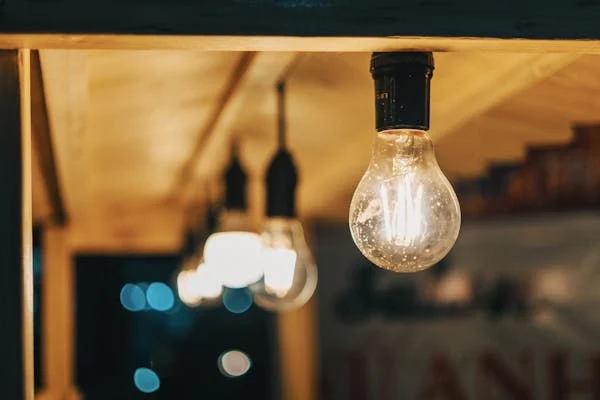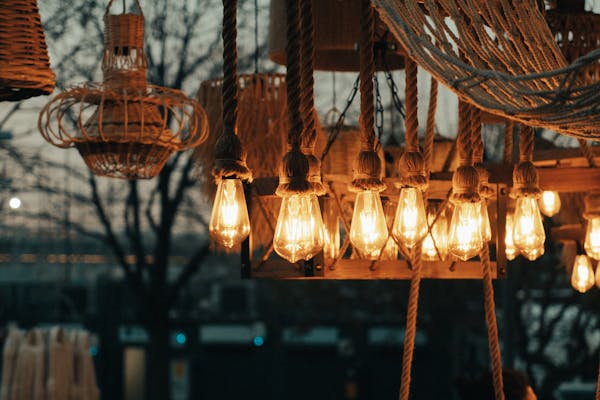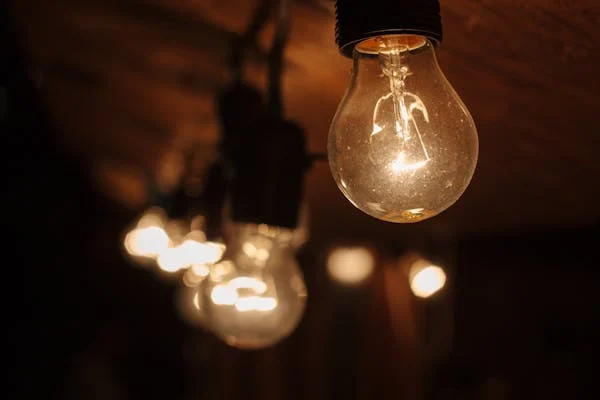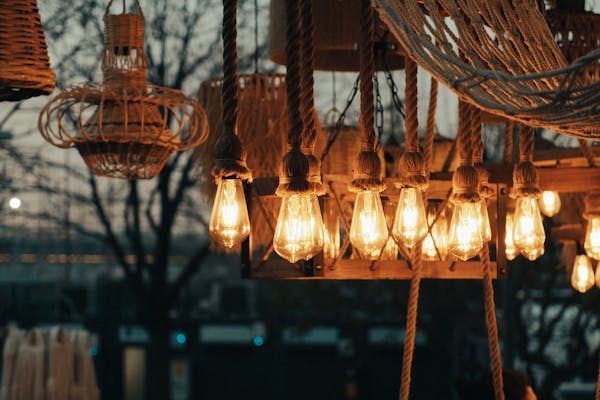Have you ever been bothered by the incessant flickering of your LED light bulb? You’re not alone! In fact, a recent survey found that 68% of homeowners have experienced flickering LED lights at some point. While LEDs are known for their energy efficiency and long lifespan, they’re not immune to issues. Let’s shed some light on What does a flickering light bulb mean and how you can stop it in its tracks!

What does a flickering light bulb mean
LED light bulbs have become a popular choice for many due to their energy efficiency and long lifespan. However, they periodically experience issues, just like any other technology. One common problem people face is flickering. But what does a flickering LED light bulb mean? Understanding this issue is crucial, especially when it comes to maintaining a safe and comfortable living environment.
Definition of LED Flickering
LED flickering occurs when the light bulb blinks on and off rapidly. It might happen so fast that you barely notice it, or it could be more obvious, causing a strobe effect. Flickering can be irritating, distracting, and in some cases, a sign of a more serious problem.
Difference Between Normal and Problematic Flickering
Not all flickering is a cause for concern. Sometimes, a minor flicker is normal, especially when the bulb is first turned on or warming up. This is due to the bulb adjusting to the current flow. However, if the flickering is consistent or becomes more frequent, it could indicate an underlying issue that needs to be addressed.
Brief Explanation of How LED Lights Work
LEDs, or Light Emitting Diodes, are different from traditional incandescent bulbs. Instead of using a filament that heats up, LEDs create light through an electrical current passing through a semiconductor. This process is more energy-efficient but also more sensitive to electrical issues. Even small changes in voltage or current can cause flickering, which is why understanding the common causes is so important.

7 Common Causes of LED Light Bulb Flickering
If your LED bulb is flickering, there could be several reasons behind it. Let’s explore the most common causes:
1. Loose or Faulty Connections
One of the most common reasons for LED flickering is loose or faulty connections. If the bulb isn’t properly screwed in, or if the wiring is loose, it can cause intermittent power, leading to flickering. This is often the easiest problem to fix, simply by tightening the bulb or checking the wiring.
2. Incompatible Dimmer Switches
Not every dimmer switch can be used with LED lights. Traditional dimmer switches are designed for incandescent bulbs, and when used with LEDs, they can cause flickering or a strobe effect. This happens because the dimmer doesn’t supply the right amount of current, causing the LED to flicker.
3. Voltage Fluctuations
Voltage fluctuations in your home can also cause LED light flashing. This happens when there are sudden drops or spikes in voltage, often due to appliances turning on and off. If your LED lights flicker when a large appliance, like a refrigerator or air conditioner, kicks in, this could be the culprit.
4. Overloaded Circuits
An overloaded circuit is another common cause of LED bulb flickering. If too many devices are drawing power from the same circuit, it can lead to insufficient voltage for your lights, causing them to flicker. Overloaded circuits can also be a fire hazard, so it’s important to address this issue promptly.
5. Defective LED Driver
The LED driver is responsible for regulating the power to the LED light. If the driver is defective or malfunctioning, it can cause the light to flicker. This issue is more complex and may require replacing the driver or the entire bulb.
6. Interference from Other Devices
Sometimes, other devices in your home can interfere with the LED light, causing it to flicker. This is especially true for smart LED bulbs that are connected to Wi-Fi or other wireless systems. Devices like routers, cordless phones, and even microwave ovens can create interference.
7. End of Bulb Life
Finally, a flickering LED bulb could simply be nearing the end of its life. Although LEDs last much longer than traditional bulbs, they don’t last forever. When an LED bulb starts to flicker frequently and has been in use for a long time, it might be time to replace it.
How to Diagnose the Cause of Your Flickering LED
Diagnosing the exact cause of flickering can sometimes be a bit tricky, but with a step-by-step approach, you can often pinpoint the issue yourself.
Step-by-Step Guide to Identifying the Issue
1. Check the Connections: Start by turning off the power and ensuring the bulb is tightly screwed in. If that doesn’t fix the problem, inspect the wiring for any loose connections.
2. Test the Dimmer Switch: If you’re using a dimmer switch, try replacing it with one that is specifically designed for LED bulbs.
3. Monitor Voltage Fluctuations: Keep an eye on when the flickering happens. If it occurs when large appliances are turned on, voltage fluctuations might be the issue.
4. Examine the Circuit Load: Check if the circuit is overloaded by disconnecting some devices and seeing if the flickering stops.
5. Inspect the LED Driver: If you suspect the driver might be faulty, try replacing the bulb with a new one. If the new bulb doesn’t flicker, the driver was likely the problem.
6. Check for Interference: Turn off other devices, especially wireless ones, and see if the flickering stops.
7. Consider the Age of the Bulb: If the bulb is old, it might simply need replacing.

Simple Tests You Can Perform at Home
For most of these issues, you can perform simple tests at home without any special tools. For instance, swapping out the bulb with a new one can help you determine if the flickering is due to the bulb itself or another problem. Similarly, temporarily turning off other electronic devices can reveal if interference is the cause.
When to Call a Professional Electrician
If you’ve tried the above steps and the flickering persists, it might be time to call a professional electrician. Issues like faulty wiring, significant voltage fluctuations, or defective circuit breakers require expert attention and can be dangerous to fix on your own.
Quick Fixes for Flickering LED Light Bulbs
Once you’ve identified the cause of the flickering, there are several quick fixes you can try to resolve the issue.
1. Tightening Loose Connections
Start with the simplest fix: tighten any loose connections. Ensure the bulb is screwed in all the way, and check the wiring for any loose or exposed wires.
2. Replacing Incompatible Dimmer Switches
If your dimmer switch is the problem, replace it with one that’s compatible with LED bulbs. Most hardware stores carry dimmer switches designed specifically for LEDs, which will eliminate flickering.
3. Installing Voltage Stabilizers
For issues related to voltage fluctuations, installing a voltage stabilizer can help maintain a consistent flow of electricity to your LED lights, preventing flickering.
4. Upgrading Your Electrical System
If overloaded circuits are causing the flickering, consider upgrading your home’s electrical system. This could involve adding new circuits or upgrading your electrical panel to handle more power.
5. Replacing Faulty LED Drivers
If the LED driver is the issue, the best fix is to replace the bulb or the driver. This is a more technical repair, but it’s necessary to ensure the longevity of your LED lights.
6. Isolating Interfering Devices
If interference from other devices is the cause, try moving your LED bulbs away from the source of the interference or turning off the interfering device.
7. Replacing Old LED Bulbs
Lastly, if your bulb is simply old, replacing it with a new one is the easiest solution. Newer bulbs often come with better technology that reduces the risk of flickering.
Preventing Future LED Light Bulb Flickering
Prevention is always better than cure. By following a few simple tips, you can avoid flickering issues with your LED bulbs in the future.
a). Choosing High-Quality LED Bulbs
Investing in high-quality LED bulbs from reputable brands can reduce the likelihood of flickering. These bulbs are often designed to handle a wider range of electrical conditions and are less likely to develop issues over time.
b). Regular Maintenance Tips
Regularly check your light fixtures and electrical connections to ensure everything is in good working order. Tightening screws and replacing worn-out parts can prevent issues before they start.
c). Understanding Your Home’s Electrical Capacity
It’s also important to understand your home’s electrical capacity. Avoid overloading circuits and ensure your electrical system is capable of handling all your devices without causing voltage drops.

When to Worry: Safety Concerns with Flickering LEDs
While not all flickering is dangerous, it’s important to know when to take it seriously.
i). Potential Fire Hazards
Loose wiring or overloaded circuits can cause sparks, which are a fire hazard. If your LED bulb is flickering due to one of these issues, it’s essential to address it immediately.
b). Signs of Serious Electrical Issues
Persistent flickering, even after trying the quick fixes, could indicate a serious electrical problem. Issues like faulty wiring or a malfunctioning circuit breaker need to be fixed by a professional to avoid potential hazards.
c). How Flickering Can Affect Your Health and Wellbeing
Flickering lights can also have an impact on your health. Prolonged exposure to flickering lights can cause eye strain, headaches, and even exacerbate symptoms of certain medical conditions. Ensuring your LED lights are flicker-free contributes to a healthier, more comfortable living environment.
Conclusion
Understanding what a flickering light bulb means and how to fix it is essential for maintaining a safe and comfortable home. By identifying the cause of the flickering and applying the appropriate fix, you can ensure your LED lights function efficiently and last as long as they’re supposed to. Regular maintenance and choosing high-quality bulbs are key to preventing future issues, while knowing when to call in a professional can help you avoid more serious problems.


